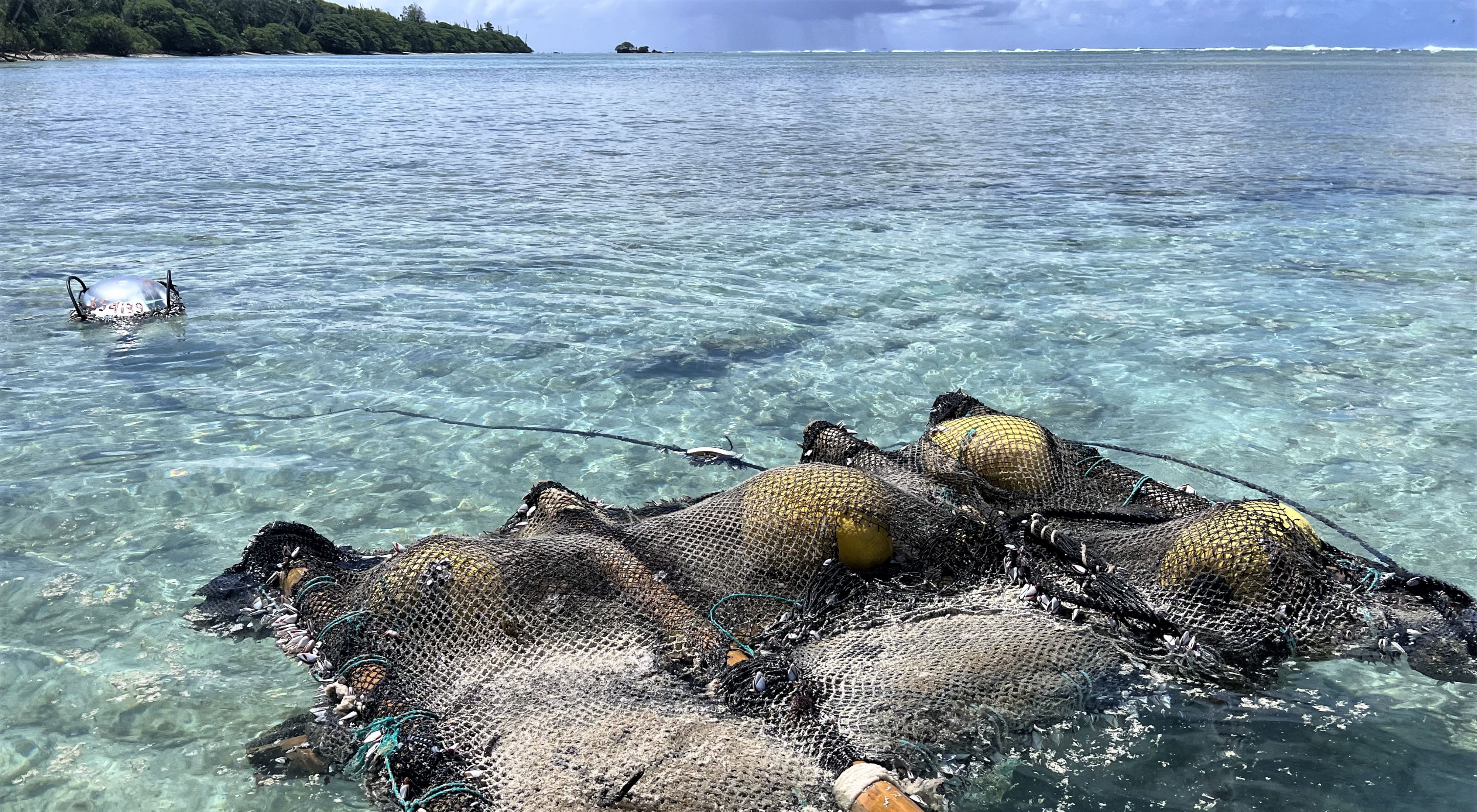TNC Announces Expansion of Partnership to Drive Conservation and Pacific Island Food Security
Media Contacts
-
Evelyn Wight
Phone: 808-537-3570
Email: ewight@tnc.org
This year on World Tuna Day, The Nature Conservancy (TNC) Hawai‘i and Palmyra announces the expansion of the first drifting Fish Aggregation Device (dFAD) partnership with commercial purse seine tuna vessels in the Pacific Ocean to remove dFADs from sensitive marine areas they may have drifted into, and donate and repurpose them in ways that drive sustainability, conservation and food security in and around the Western and Central Pacific Islands.
Since 2008, Kydd Pollock, Pelagic Conservation Strategy Lead for TNC, has been working on Palmyra Atoll, located 1,000 miles south of Honolulu, to remove debris from wayward dFADs from its reefs, lagoons and beaches.
He has since developed the partnership to enhance the protection of marine resources within the Pacific Remote Marine National Monument (PRIMNM) around Palmyra Atoll.
Purse seine fishers legally use dFADs to aggregate valuable schools of tuna. The floating raft structures are made from durable material such as bamboo, floats, nylon netting and PVC pipes, fitted with a satellite buoy that incorporates an echo sounder that conveys location and fish abundance. The devices float across the ocean with the currents, letting commercial fishers know where to go for their best chance of securing a catch.
Approximately 30-40,000 dFADs are deployed across the Pacific annually with around 7-10% drifting away from productive fishing grounds where retrieval is not cost-effective. Those that enter the waters around Palmyra Atoll can damage the fragile coral reef ecosystem if not intercepted prior to grounding. Through a relationship built on trust and common goals, the commercial fishing partners share location from the dFADs with TNC, allowing TNC to recover any dFADs that threaten to impact Palmyra’s coral reefs.
The partnership formally began in June 2021 with the U.S. Pacific Purse Seine Tuna Group; soon thereafter, the Cape Fisheries fleet joined. In 2023, it more than doubled in size with the addition of the Spanish Pacific Asociaicón de Grandes Atuneros Congeladores (AGAC) purse seine fleet.
“We commend the purse seine industry partners for their commitment to TNC and this conservation action by covering many costs of the program and approving crucial amendments to the scientific data being collected from their fishing devices,” says Pollock.
“The U.S. Pacific Tuna Group appreciates the opportunity to work with TNC on the Palmyra FAD Watch Program and its relationship we have developed over the past few years,” says William (Bill) Sardinha, Fishery Improvement Projects coordinator, U.S. Pacific Tuna Group. “We recognize the benefits of working with trusted partners that collect scientific data on drifting FADs with the goal that our participation will lead to better FAD management and contribute to the sustainability and viability of the fishery in the Pacific Region.”
The Western and Central Pacific Ocean, where Palmyra Atoll is located, is home to the world’s largest tropical tuna purse seine fishery, numbering at 262 vessels in 2021, with catches estimated over $2.5 billion.
“Cape Fisheries is very grateful to be a member of this ongoing effort between the U.S. flagged purse seine vessels and TNC,” says Beth Vanden Heuvel, Director of Scientific Operations for Cape Fisheries. “The fishing industry is continuously looking for ways to improve the sustainability of our operations, so the opportunity to build these types of partnerships is invaluable. The project’s success thus far is a wonderful example of the win-win scenarios that can result from collaborations between scientists and the industry.”
Tracking the dFADs also provides important scientific data about fish biomass inside and outside the PRIMNM. This data is especially important because the area has been largely unstudied.
“AGAC is committed to the best FAD management and has demonstrated this for many years through pioneering the FAD Watch project in the Seychelles, Indian Ocean since 2017,” says Julio Moron, PhD, Managing Director of AGAC. “We are very happy to engage with TNC in the Pacific for this FAD Watch project at Palmyra Atoll. We frankly believe that FAD geofencing is a practical and effective way to prevent adverse dFAD effects on vulnerable marine ecosystems,” he says.
The latest development within the program is the repurposing of dFAD satellite buoys collected at Palmyra and attaching them to local anchored FADs (aFADs) for a TNC-led Pacific Island community artisanal fishing project in Micronesia.
“Many Micronesian fishing communities we work with want to shift their fishing effort from coastal coral reef fisheries to pelagic (deep water) resources to improve local food security,” says Alex Filous PhD, TNC Director of Sustainable Fisheries Micronesia and Polynesia. The echosounder buoys help local fishers focus their fishing efforts when increased concentrations of tuna are around their aFADs. “It’s nice to see the fishing industry willing to support this initiative and give this technology back to these communities,” says Filous.
“The future in this space between sustainable fishing and environmental awareness is exciting and it can’t happen without all user groups working together to conserve precious ocean resources,” Pollock says.
The Nature Conservancy is a global conservation organization dedicated to conserving the lands and waters on which all life depends. Guided by science, we create innovative, on-the-ground solutions to our world’s toughest challenges so that nature and people can thrive together. We are tackling climate change, conserving lands, waters and oceans at an unprecedented scale, providing food and water sustainably and helping make cities more sustainable. The Nature Conservancy is working to make a lasting difference around the world in 81 countries and territories (40 by direct conservation impact and 41 through partners) through a collaborative approach that engages local communities, governments, the private sector, and other partners. To learn more, visit nature.org or follow @nature_press on X.
